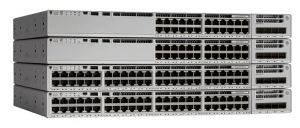In the world of networking, the right equipment can make all the difference. Cisco, a name synonymous with network innovation, offers a range of products designed to meet various networking needs. Two popular choices, the Catalyst 9200 and 9200L, have been making waves in the networking community. If you’re faced with the choice between these two models, this user-friendly comparison will help you determine which one is the perfect fit for your requirements. Eager to Learn More? Visit Cisco C9200L Catalyst switches
Understanding the Catalyst 9200 and 9200L
Before we dive into the comparison, let’s understand what the Catalyst 9200 and 9200L actually are.
Catalyst 9200:
The Catalyst 9200 series switches are known for their superior performance and advanced features. They are designed to cater to the needs of medium to large enterprises, providing a robust and reliable networking solution. These switches offer features like high port densities, powerful stacking capabilities, and enhanced security mechanisms, making them ideal for organizations with demanding networking requirements.
Catalyst 9200L:
On the other hand, the Catalyst 9200L series switches are geared towards small to medium-sized businesses that are looking for a cost-effective yet capable networking solution. These switches offer a balance between performance and affordability, making them a great choice for businesses that need reliable connectivity without breaking the bank. While they might not have all the advanced features of the standard 9200 series, they still pack a punch when it comes to delivering stable networking performance.
The Comparison: Catalyst 9200 vs. 9200L
Performance and Capacity
When it comes to raw performance and capacity, the Catalyst 9200 series has the upper hand. With higher port densities, faster data rates, and more advanced hardware, these switches can handle heavier workloads with ease. This makes them a go-to choice for enterprises dealing with a large number of devices and high data traffic.
On the other hand, the Catalyst 9200L series sacrifices some performance for cost-efficiency. While they might not match the raw power of their counterparts, they are still more than capable of handling the needs of small to medium-sized businesses without any hiccups.
Features and Flexibility
The Catalyst 9200 series shines in terms of features and flexibility. These switches offer advanced capabilities like extensive security features, flexible stacking options, and support for various network protocols. This makes them a great fit for organizations that require a high degree of customization and security.
The Catalyst 9200L series, while not as feature-rich as the standard 9200 series, still provides a range of essential features that cater to the needs of small and medium-sized businesses. They offer a balance between simplicity and capability, ensuring that you get the most bang for your buck.
Scalability
Scalability is a critical factor to consider when choosing a network switch. The Catalyst 9200 series stands out in this department with its robust stacking capabilities. These switches can be stacked together to create a single, logical switch entity, simplifying management and enhancing scalability. This is a significant advantage for larger enterprises that anticipate rapid growth.
The Catalyst 9200L series, while not as scalable as their counterparts, still offer a degree of scalability that is suitable for the target audience of smaller businesses.
Budget Considerations
One of the most significant differentiators between the Catalyst 9200 and 9200L series is the price point. The Catalyst 9200 series, with its advanced features and higher performance, comes at a higher cost. This might be justifiable for enterprises that require the extra power and capabilities.
On the other hand, the Catalyst 9200L series is more budget-friendly, making it an attractive option for businesses that want a reliable networking solution without making a substantial investment.
Choosing Your Sidekick: Factors to Consider
To choose between the Catalyst 9200 and 9200L, here are some factors to consider:
Business Size and Scale: Consider the size of your organization and its expected growth. Larger enterprises with extensive networking needs might find the Catalyst 9200 series more suitable, while smaller businesses can benefit from the cost-effective Catalyst 9200L series.
Performance Requirements: Evaluate your performance requirements. If you deal with heavy data traffic and numerous devices, the Catalyst 9200 series might be the better choice. For moderate usage, the Catalyst 9200L series should suffice.
Features and Customization: Think about the specific features and customization options you need. The Catalyst 9200 series offers advanced capabilities, while the Catalyst 9200L series provides essential features at a lower cost.
Budget Constraints: Your budget is a crucial factor. While the Catalyst 9200 series offers top-tier performance and features, the Catalyst 9200L series provides cost-effective solutions without compromising too much on functionality.
In the end, the choice between the Catalyst 9200 and 9200L series depends on your organization’s unique needs and constraints. The Catalyst 9200 series excels in performance, features, and scalability, making it an excellent choice for enterprises with demanding networking requirements. On the other hand, the Catalyst 9200L series strikes a balance between performance and affordability, catering to the needs of small to medium-sized businesses.
Carefully assessing your business’s size, performance requirements, customization needs, and budget will guide you in making an informed decision. Whether you go for the high-powered Catalyst 9200 or the budget-friendly Catalyst 9200L, Cisco’s offerings ensure that your networking needs are met with cutting-edge technology and reliability.
